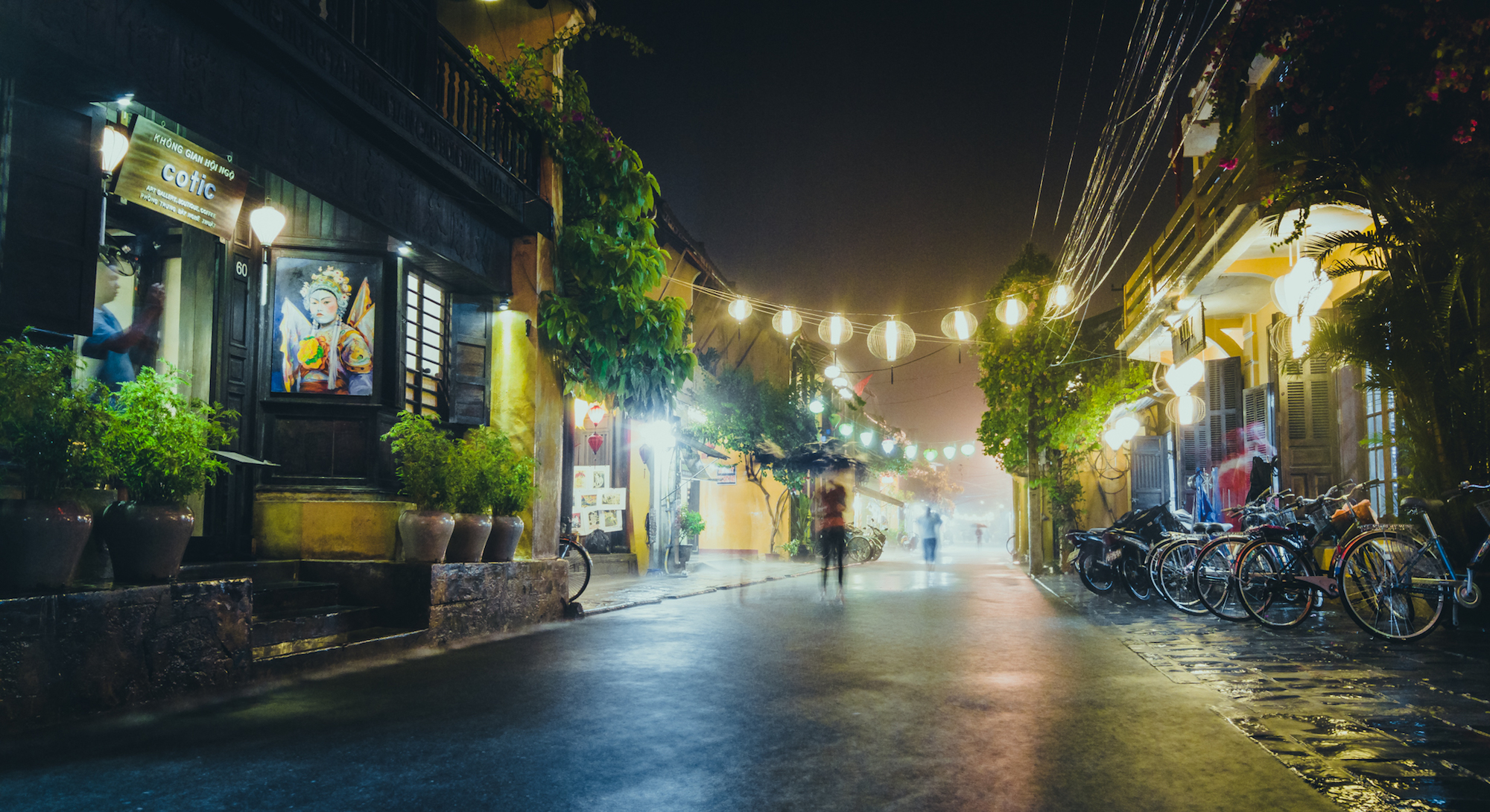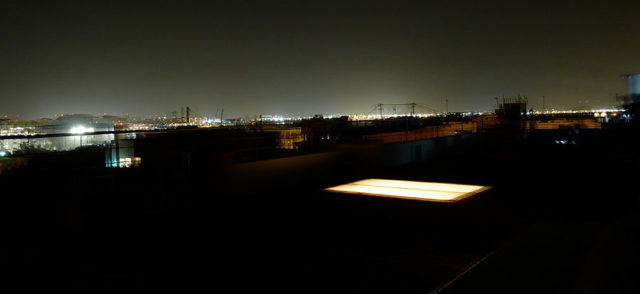
The Nocturnal City
March 24, 2015 — Blog
One’s experience of a city at night is always singular and intimate, especially when visiting for the first time, experiencing its landscape after a period of absence or following a long journey. Then, a new time-space engulfs us. We ask ourselves, should we rush back to daytime reality or accept to linger a little longer in this other world?

We consider the urban night as essential to city life, a place and time we explore to fulfill our needs and desires. When daytime activities and routine subside, we allow ourselves to relax and unwind in the urban night. Nighttime in cites allows for the transgression of boundaries that were insurmountable during the day. Artists use the night’s mystery and poetry to create. More broadly, the whole city can be seen to be preparing itself at night: public spaces are cleaned, trash is cleared and shops re-stock.
Nighttime is gaining importance as urban territories grow across the world and as traffic congestion and pollution peak. In our rapidly urbanizing society, the realm of nighttime is emerging as a strategic field for exploration, organization and growth, for both public and private actors.
Among the many think-tanks dedicated to “smart cities” and urban issues that are proliferating, most study phenomena that occur during the day and disregard the increasingly important realm of nighttime. “Nighttime strategies” launched by cities often focus on tensions between nocturnal revelers and citizens who prefer to rest, as observed in London’s ‘Managing the Night Time Economy Plan’ and Paris’s ‘Les Pierrots de la Nuit’.
However, at a time when public actors are asked to be innovative and to develop lean, competitive cities, we believe that the realm of nighttime has a huge potential that has not yet been exploited.
In the future, cities should define a clear strategy for nighttime that takes into account economic, social, political and cultural opportunities that the realm offers. Truly smart cities should stop thinking about nighttime in terms of a division between those who want to rest and those who remain awake. Cities should seize the great opportunities that nighttime offers and consider it as a territory in itself that requires its own dedicated structure. We can notice some positive developments on this front; for example, Welcome City Lab, a Parisian startup incubator dedicated to innovation in tourism, is already reflecting upon the immense opportunities this realm holds.
Cities should seize the great opportunities that nighttime offers and consider it as a territory in itself that requires its own dedicated structure.
Whilst certain forward-thinking companies are becoming increasingly aware of the potentials of nighttime, the majority of corporate actors treat it as a limit to commercial activity. Firstly, this limit is a legal one, as nighttime requires higher security control than daytime. For example, in France, public spaces such as parks are closed at night; there are also different rules applying to the purchase of alcoholic beverages after a certain hour.
The limit is also economic, since nocturnal working requires higher wages. In France, after-hour wages are up to twice as much as daytime wages. Lastly, the numerous and potentially severe health conditions related to nocturnal working, prevent it from becoming commonplace. For example, a recent study in the American Journal of Preventive Medicine revealed that women who work rotating night shifts for five years or more have a 25 per cent greater risk of lung cancer. Another study revealed that shift workers – particularly male shift workers – have a 65% greater risk of type 2 diabetes.
Opportunities for innovation abound if we re-think our attitudes to time and space in cities.
Despite these constraints, smart business actors are becoming deeply aware of the boost that night’s numerous opportunities could give to their activities. Firstly, new market space could be created for specific innovations based on a close observation of lifestyle and consumption modes. New products and services dedicated to nighttime are yet to be invented. For example, what if a post office were to be used as a concert hall at nighttime? Parks could transform into outdoor cinemas, private parking lots into residential parking for locals. Supermarkets could become coworking spaces at nighttime. Opportunities for innovation abound if we re-think our attitudes to time and space in cities. However this can only happen through better interaction between the private and public actors.
Accordingly, public players could reflect on segmenting the population’s access to night activities, as done by the City of Sydney in OPEN Sydney: Future Directions for Sydney at Night, an action plan which not only aims at social youngsters, but also at an older and more diverse population.
Increasing traffic congestion sparks us to dream of a car-free metropolis. Thanks to organizational, technical and legal adaptations, the flow of transporting goods through a city could be delayed until nighttime, when traffic levels are lighter. The rise of the Internet of Things could also help to develop silent and non-polluting robots and drones to take care of nighttime logistics, such as the delivery of goods with the use of drones.
Many conventional business activities have now moved into the digital world, leaving behind the need for spatial anchoring. One can work, consume and soon produce – thanks to the 3D printing revolution – anytime, anywhere. This de-coupling of society’s traditional approach to time and space challenges the fixed duality between day and night, work and rest. Companies and public actors are then bound to re-imagine work times and environments not only during the day, but also at night. Moreover, de-synchronizing work schedules could help spread the congestion peak observed in public transportation at the beginning and end of standard office hours.
These shifts force public authorities to develop an urban nighttime strategy that allows for a harmonious development of both its economic and social activities with regard to its history, citizen needs and customs.
The City of Shanghai is now advancing towards the development of a strong nightlife economy, where purchasing power dominates. By contrast, Melbourne’s policy makers regulate the surge in nighttime economy by focusing on cultural and social activities as part of a push towards inclusivity.
Numerous Latin American cities, such as Mexico City, Buenos Aires, Caracas and Asuncion, have been using nocturnal cultural events as a major tool to gain back ownership of the city that is too often in the hands of violence and public insecurity. However, these initiatives remain rare.
In the era of the so-called “Smart City”, it is important to keep in mind that cities are first and foremost public spaces. We talk a lot about the role of corporate institutions in building the infrastructure of cities, as if they are first and foremost economic entities. This is not the case. Cities, if we consider them in the Roman sense of the word, are first and foremost political space, where different actors come together to create civic projects. It would be harmful to view the city as a primarily economic entity. That is why the role of the public sector in civic nighttime policy is crucial in creating a balanced, dynamic ecosystem.
Thus it is urgent that public authorities do not leave nighttime development to private actors alone. On the other hand, public action should not hamper meaningful private initiatives, due to ignorance or lack of vision. If we take this approach, nighttime will then emerge as an abundant space for citizens, public and private stakeholders to imagine together the future of our cities.